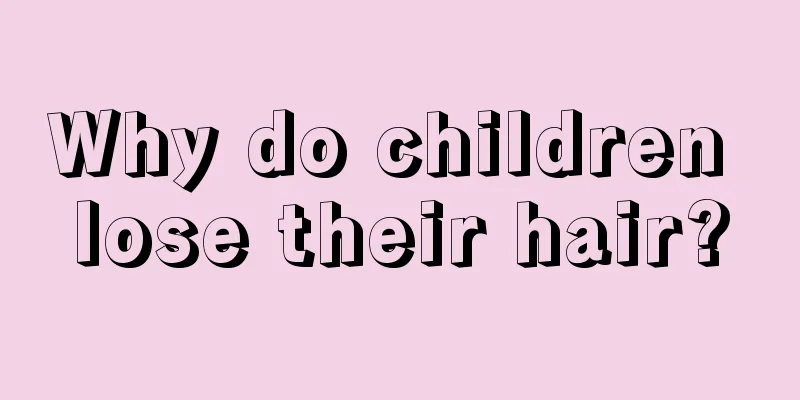What medicine should I use for baby keratitis

|
What medicine is best for baby keratitis to treat the disease? Patients need to choose the correct medicine according to the doctor's advice, and know the cause of the disease, so that the baby can better stay away from the impact of keratitis. If a baby suffers from keratitis, the bacterial infection should be treated to avoid the increase of sequelae of keratitis. The basic principle of treating pediatric keratitis is to take all effective measures to quickly control the infection, strive for early cure, and minimize the sequelae of keratitis. 1. Hot compress: dilates blood vessels in the eyes, relieves congestion, and promotes blood flow, allowing ulcers to recover quickly. 2. Flushing: If there is a lot of secretion, you can use normal saline or 3% boric acid solution to flush the conjunctival sac 3 times or more a day to flush out the secretion, necrotic tissue, bacteria and toxins produced by bacteria. In this way, not only the factors that spread the infection are reduced, but also the concentration of the local medicine is ensured not to decrease. 3. Mydriasis: Atropine is the main and commonly used drug, with a concentration of 0.25-2% solution or ointment, which is dripped or applied 1-2 times a day (be sure to press the lacrimal sac after dripping the medicine to prevent the solution from being excessively absorbed by the mucous membrane and causing poisoning). 4. Bacteriostatic agents: (1) Sulfonamide chemical preparations, such as 10%-30% sodium sulfacetamide and 4% sulfisoxazole eye drops. (2) For Gram-positive coccal infections, topical application of 0.1% rifampicin eye drops, 0.5% erythromycin, or 0.5% bacitracin eye drops 4 to 6 times a day is sufficient to control the infection. Some broad-spectrum antibiotics such as 0.5% chloramphenicol, 0.25% chloramphenicol and 0.5% tetracycline (0.5%) are more effective in antibacterial effects. (3) For infections caused by Gram-negative bacteria, you can choose 1%-5% streptomycin, 0.3%-0.5% gentamicin, polymyxin B (20,000 units/ml), 0.25-0.5% neomycin, 0.5% kanamycin, etc. 5. Bandaging and dressing: (1) In order to stop the eyeball from rotating and promote the early healing of the ulcer, it must be bandaged. This treatment is particularly useful in winter. Because it not only prevents the eyeballs from getting cold, but also has a warming and protective effect. (2) If there is secretion in the conjunctival sac, it should not be bandaged and can be replaced with a Bühler eye patch or black glasses. Furthermore, if the ulcer is about to rupture or is about to bulge during the scarring stage, a compression bandage should be applied daily. If this is not possible during the day, it should be applied at night while sleeping in order to prevent adverse consequences. 6. Etiology treatment: (1) When treating corneal ulcers, attention must be paid to the cause of the ulcer and treatment must be given accordingly. (2) The most important things to watch out for are conjunctivitis and malnutrition. For example, trachoma pannus ulcers are difficult to heal if the trachoma is not treated at the same time. For example, if you do not pay attention to overall nutrition and supplement vitamin A for corneal softening, not only will the corneal softening be difficult to heal, but it will also get worse. 7. Stimulation therapy: When the ulcer has completely healed and started to scar, efforts should be made to make the scar as thin as possible. For small, dense, and centrally located leukoplakia, iridectomy may be performed to improve vision. For larger white spots, a corneal transplant may be done. Sometimes corneal leukoplakia is unsightly and can be treated with corneal ink acupuncture using coal soot or Chinese ink. Refer to the following dietary treatments for keratitis: 1. 12 grams each of honeysuckle and forsythia, 6 grams each of mulberry leaves and chrysanthemum, 6 grams each of schizonepeta, saposhnikovia and red peony root, and 3 grams of licorice. Decoction in water, 1 dose per day, divided into 2 doses. 2. 15 grams each of Prunella Vulgaris and Isatis Indigotica, 10 grams each of Scutellaria baicalensis, Forsythia suspensa, Saposhnikovia divaricata, Cnidium monnieri, Vitex rotundifolia, and Bupleurum chinense, 12 grams each of Plantago seed and Paeonia lactiflora. Decoction in water, 1 dose per day, divided into 2 doses. 3. 9 grams each of Tribulus terrestris and Coix lacryma-jobi, 6 grams of Amaranthus acutus seeds, 5 grams each of mulberry leaves and Scutellaria baicalensis, 3 grams each of mint and licorice, and 7 cicada shells. Decoction in water, 1 dose per day, divided into 2 doses. 4. 30 grams each of Astragalus and Codonopsis, 18 grams of Polygonatum, 15 grams each of Ligustrum lucidum, Cuscuta australis, and Lycium barbarum, 12 grams of Cornus officinalis, 10 grams of Moutan bark, 9 grams each of Chuanxiong, Schisandra chinensis, Tangerine peel, Bupleurum, and Cimicifuga. Decoction in water, 1 dose per day, divided into 2 doses. 5. 12 grams each of Isatis Root and Cassia Seed, 9 grams each of Bupleurum, Schizonepeta, Saposhnikovia, Lonicera, Forsythia, Scutellaria, Red Peony Root, Gentiana, Gardenia, and Vitex, 6 grams of Coptis chinensis, and 3 grams of Licorice. Decoction in water, 1 dose per day, divided into 2 doses. 6. 24 grams of raw rehmannia, 18 grams of Scrophularia, 12 grams of Rehmannia root bark, 9 grams each of castor seeds and betel nut, 6 grams of cooked rhubarb, 4.5 grams each of Yuanming powder and stir-fried Citrus aurantium. Decoction in water, 1 dose per day, divided into 2 doses. |
<<: What is the method for removing hereditary freckles in children?
>>: Do children with autism imitate?
Recommend
At what age can children eat chocolate?
Many children love chocolate very much, but choco...
How to deal with children's abrasions and broken skin
Children often bump into things while playing. Es...
Why do children have constipation and dry stools?
Many parents find that their baby's stool is ...
What causes pimples on children’s gums?
The fleshy bumps on children's gums may be ca...
What are the main reasons for lack of concentration?
For children, it is normal to be inattentive. For...
What to do if your child has urticaria
Urticaria is a disease in which symptoms appear o...
Why does my 3-month-old baby not want to breastfeed?
Why does a 3-month-old baby not want to drink mil...
Can a one-year-old baby eat sweet potatoes?
Children have grown teeth when they are about one...
Have all the children's teeth been replaced?
After a child reaches the age of six, they will g...
Can nephritis in children be cured?
Can nephritis be cured? With the continuous devel...
How to treat children's Yin deficiency and internal heat?
The most obvious manifestation of yin deficiency ...
Prevention and care of infant tongue ulcers
The oral cavity of a newborn baby is relatively f...
What is the probability of retinopathy of prematurity?
For families who have just given birth to a prema...
Can children eat bananas when they have a cold?
Children can eat bananas when they have a cold, b...
What to do if your child doesn't like to write
Parents are more concerned about their children&#...









